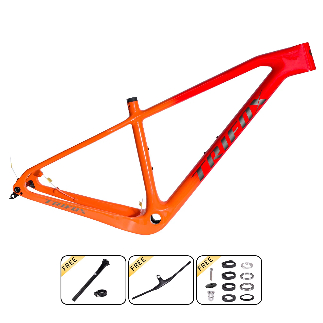
Building your dream mountain bike from the ground up is one of the most rewarding experiences for any cyclist. It allows for complete customization, ensuring every component is perfectly tailored to your riding style and local trails. If you're aiming for a modern, capable, and efficient 29er, starting with a high-quality carbon hardtail frame like the Trifox Carbon Hardtail Frame (SDY21) is the perfect foundation.Step 1: The Heart of the Build - Choosing the Right FrameThe frame is the soul of your bike, dictating its geometry, ride quality, and component compatibility. For a dream 29er mountain bike, a carbon hardtail frame is an excellent choice. It offers an ideal blend of lightweight performance, stiffness for efficient power transfer, and inherent vibration damping for better comfort on rough trails. A frame like the Trifox SDY21 features modern standards like Boost spacing for stiffer wheels, a tapered head tube for enhanced steering precision, and internal cable routing for a clean appearance.Step 2: Selecting the Wheelset and DrivetrainThe wheels are your bike's connection to the trail. For a 29er build, you benefit from superior rollover capability over obstacles, helping to maintain momentum. Pair your frame with a sturdy, yet lightweight, wheelset that matches the Boost hub spacing. For the drivetrain, the modern standard is a 1x (single front chainring) setup. It's simpler, lighter, and eliminates the risk of chain drops. Combine a narrow-wide chainring with a wide-range 12-speed cassette to give you all the gear range you need for any terrain.Step 3: Dialing in Control with Suspension and CockpitSince you're building a hardtail mountain bike, your suspension comes entirely from the fork. A quality air-sprung fork with 120mm-130mm of travel is a versatile choice for most trail riding. Ensure it has a tapered steerer to match your frame's head tube for optimal stiffness. Your cockpit—the handlebar, stem, and seatpost—is your control center. A 35mm diameter handlebar and stem combo offers robust stiffness, while a dropper post is a game-changing upgrade for confident descending on your custom 29er build.Step 4: Ensuring Stopping Power and Finishing TouchesModern trails demand powerful brakes. Hydraulic disc brakes are essential, and the frame provides post-mount compatibility for a clean installation. Choose rotor sizes that match your aggression and trail demands. Finally, select the finishing kit: a comfortable saddle, reliable pedals (flat or clipless), and durable tires that suit your typical terrain. These components personalize the bike and complete your MTB project build. Why the Trifox SDY21 Frame is the Ideal FoundationBuilding around a carbon 29er frame like the Trifox SDY21 sets your dream build up for success. Its full carbon fiber construction provides the perfect blend of low weight, vibration damping, and pedaling efficiency. The internal cable routing creates a clean, snag-free appearance and protects the cables from the elements. This frame is designed for the rider who appreciates a direct, engaging trail feel and wants a bike that is both a capable climber and a fun, agile descender.Your Dream 29er AwaitsBuilding a bike around a carbon hardtail frame is a deeply personal and satisfying process. You gain an intimate understanding of your machine and create a ride that is uniquely yours. By carefully selecting each component to match this high-quality frame, you will craft a lightweight hardtail mountain bike that is ready to conquer trails and provide endless smiles for years to come. Start your build journey today and experience the ultimate in customization and performance. Learn how to build your ultimate 29er mountain bike using the Trifox SDY21 carbon hardtail frame as your foundation. This guide walks you through selecting the perfect wheelset, a modern 1x drivetrain, the right suspension fork, and key components to create a lightweight, high-performance hardtail MTB tailored to your local trails.
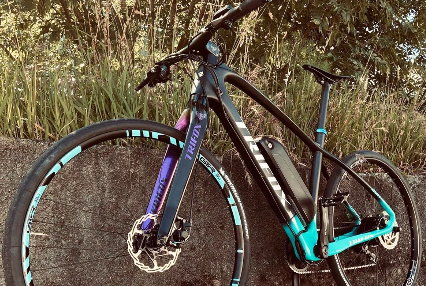
When it comes to mountain biking, control and comfort are non-negotiable. Every trail, every descent, and every technical section demands a fork that can handle the rigors of off-road riding while keeping you in command. Enter the Trifox 29er Disc Brake Tapered Carbon MTB Rigid Fork (Model TA-TMK100)—a game-changer for riders seeking to elevate their MTB experience. In this blog, we'll explore how this fork enhances control and comfort, making it a must-have upgrade for your mountain bike.Lightweight Carbon Construction for Agile HandlingOne of the standout features of this 29er carbon MTB fork is its full carbon fiber construction. Weighing just 600g, this fork significantly reduces bike weight for quicker steering response, easier maneuverability, and less fatigue on long rides. Whether navigating tight singletrack or climbing steep gradients, the reduced weight allows for more agile handling and better control—perfect for cross-country and trail riders who value speed and precision.Tapered Design for Superior Stiffness and StabilityThe tapered carbon fork features an engineered steerer tube that widens at the base to enhance steering precision and reduce flex. This design provides optimal stiffness during high-speed descents and aggressive cornering, giving riders confidence to tackle technical sections with predictable handling and improved stability.29er Compatibility for Smooth Rollover and TractionThe 29-inch wheel compatibility of this 29er rigid fork ensures superior obstacle rollover, maintaining momentum and reducing bump impact. This results in a smoother ride with improved traction, directly translating to better control and comfort on rocky trails or loose gravel surfaces.Disc Brake Compatibility for Reliable Stopping PowerEquipped with disc brake mounts, this ensures consistent, powerful braking in all conditions. The compatibility with modern hydraulic or mechanical disc brakes provides superior modulation and stopping power, crucial for maintaining control on steep descents and wet trails while ensuring rider safety.Vibration Damping for a Comfortable RideCarbon fiber's natural vibration-damping properties make this carbon mountain bike fork exceptionally comfortable. By absorbing high-frequency trail vibrations, it reduces hand fatigue and discomfort, allowing for longer, more enjoyable rides—particularly beneficial on rough terrain where constant vibrations can cause numbness. Sleek Design and Easy InstallationBeyond performance, the Trifox 29er Fork boasts a sleek, minimalist design that complements modern mountain bikes. Its gloss finish and clean lines add a touch of style to any build. Additionally, the fork is designed for easy installation, with compatibility for tapered head tubes and standard 100 * 15mm thru axles. Whether you’re upgrading an existing bike or building a new one, this fork is a straightforward and rewarding addition.The Trifox 29er Disc Brake Tapered Carbon MTB Rigid Fork -TMK100 is a premium upgrade that delivers on both control and comfort. Its lightweight carbon construction, tapered design, and 29er compatibility work together to enhance your riding experience, while its vibration-damping properties ensure a smooth and comfortable ride. Whether you’re a competitive racer or a weekend warrior, this fork will help you tackle trails with confidence and style.Ready to transform your mountain bike? Check out the Trifox 29er Carbon MTB Fork today and experience the difference for yourself!
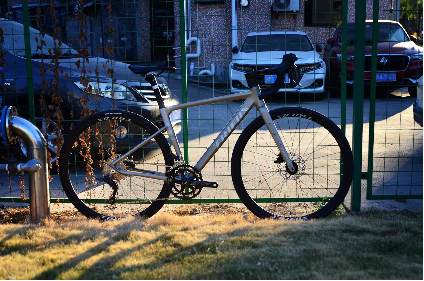
When it's time to choose a road cycle frame, the conversation often jumps straight to carbon fiber. But what if the smarter, more rewarding choice has been here all along? While the lower price of an aluminum road frame is a well-known advantage, the real benefits go much deeper. Modern alloys like those used in the Trifox R241 frameset offer a compelling mix of performance, character, and value that deserves a closer look. Benefit 1: Legendary Durability and Reliability For riders who demand a worry-free companion, aluminum road bike frames are exceptionally durable. Unlike carbon, which can be susceptible to impact damage and requires careful handling, aluminum is inherently robust. It can withstand the minor knocks and stresses of daily use, transport, and even the occasional mishap. This makes a frame like the R241, crafted from 6061 aluminum alloy, a perfect "forever frame" or an ideal choice for a dedicated training bike that you can rely on in all conditions. Benefit 2: A Lively and Responsive Ride Feel This is where aluminum road frames truly shine. Aluminum has a distinct stiffness that translates to instant power transfer. When you stomp on the pedals, the frame flexes minimally, putting more of your energy directly into forward motion. This creates a lively, snappy, and responsive feel that many riders love, especially for spirited group rides, sprinting, and climbing. It’s a raw, connected sensation that makes you feel every watt of effort is being used efficiently. Benefit 3: The Perfect Platform for High-End Components An aluminum road frame like the Trifox R241 offers a brilliant strategy for building a high-performance bike without the high-performance price tag. By investing the money you save on the frame into better components—such as a lighter wheelset, a more precise groupset, or a more comfortable cockpit—you can create a machine that outperforms a pre-built bike with a carbon frame but mediocre parts. The frame becomes the reliable, high-quality foundation for your dream build. Benefit 4: Surprisingly Refined Modern Engineering Forget the harsh, jarring ride of old aluminum bikes. Modern hydroforming technology, used in crafting the R241, allows tubes to be shaped into complex, aerodynamically optimized profiles. This means engineers can design frames that are stiff in the bottom bracket for efficiency but tuned in the seat stays and fork to dampen road vibrations. The result is a ride quality that is crisp and efficient, yet far more comfortable than you might expect.? More Than Just a Budget Option Choosing an aluminum road frame is not about settling for less; it's about choosing a different set of advantages. It’s a decision that prioritizes durability, a lively and engaging ride character, and smart value that allows for upgrades where they count most. The Trifox R241 Aluminum Frameset embodies all these benefits. It’s a testament to how far aluminum road bike technology has come, proving that you don't have to sacrifice performance for practicality. It’s the perfect foundation for a responsive, reliable, and incredibly rewarding road machine.
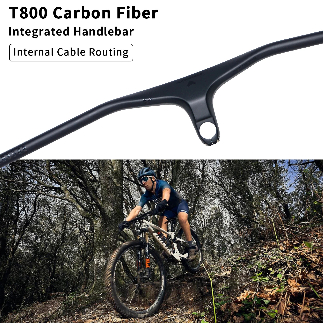
Let's be honest. Are you tired of looking down at your mountain bike bars only to see a tangled nest of shift and brake cables? Not only does it look messy, but those exposed cables can snag on branches, collect grime, and create annoying cable rub on your precious head tube. What if there was a solution? What if you could achieve a sleek, minimalist front end that looks like it belongs on a concept bike? Enter the Trifox RHB600 Ultra-Light Integrated Full Inner Mountain Bike Handlebar. This one-piece carbon fiber handlebar promises the clean look we crave. But is it the real deal? Let's dive in. What Are Integrated Carbon Handlebars? Traditional mountain bike handlebars are a two-piece system: a bar and a separate stem. Cables are typically routed externally, or at best, enter the frame but still loop around the head tube. An integrated handlebar, like the Trifox RHB600, changes everything. It's a single, unified component crafted from carbon fiber, where the bar and stem are one. Its defining feature is full internal routing—channels are molded directly into the structure, allowing brake hoses and shift cables to run completely through the bar and stem, disappearing from view entirely. Are These the Cleanest Mountain Bike Bars? Analyzing the Trifox RHB600 So, does the Trifox RHB600 live up to its promise of a pristine cockpit? The evidence points to a resounding yes. 1. The "Wow" Factor of a Clean Cockpit: The most immediate benefit is the stunning visual upgrade. With all cables seamlessly routed inside the integrated carbon bar, the front of your bike looks fast, modern, and professional. It’s a level of clean that is simply impossible to achieve with traditional components. 2. Aerodynamics (Yes, on a MTB!): While not the primary goal on the trail, reducing cable clutter marginally improves airflow. Every little bit counts when you're chasing speed. 3. Protected Cables: By tucking them away inside the bar, you shield your crucial brake and shift lines from the elements—mud, dust, and moisture—which can contribute to longer component life and more consistent performance. 4. Ultra-Lightweight: Made from high-modulus carbon fiber, the RHB600 is engineered to be exceptionally light. Reducing weight at the cockpit, the most manipulated part of the bike, enhances handling agility and makes the bike feel more responsive. 5.The Installation Consideration: It's important to be upfront. Installing a full inner routing handlebar is more complex than a traditional bar. It requires patience and the right tools, like a hydraulic hose kit for brakes. For many, the unparalleled clean look is well worth the extra effort during the initial build or professional installation. Who Is This Ultimate Clean Cockpit For? The Trifox RHB600 is the perfect upgrade for: The Weight-Weenie: Seeking every gram savings without sacrificing strength. The Aesthetic Perfectionist: Who believes a clean bike is a fast bike and takes pride in a flawless build. The Tech-Savvy Trail Rider: Who appreciates modern engineering and the functional benefits of protected cables. The Upgrader: Looking for a single component that will dramatically transform the look and feel of their modern mountain bike. The Verdict on Cleanliness So, back to our original question: Are These the Cleanest Mountain Bike Bars? If your definition of "clean" is a cockpit completely free of visual cable clutter, then the answer is a definitive yes. The Trifox RHB600 achieves a level of minimalist perfection that sets a new standard. It combines the weight savings and stiffness of carbon fiber with the sleek, professional finish of full internal routing. While it demands a more meticulous installation, the payoff is a breathtakingly clean front end that enhances aesthetics, offers subtle performance benefits, and gives you the pride of owning a bike that looks as high-performance as it rides.
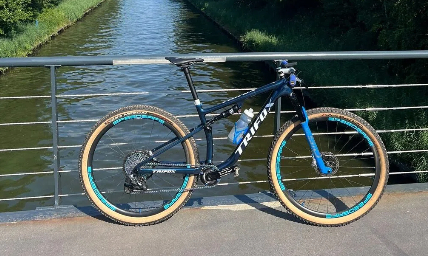
Discover the Trifox Trail II Pro full suspension mountain bike frame. This lightweight XC carbon 29er features modern geometry, efficient suspension, and the SRAM Universal Derailleur Hanger (UDH) for a truly future-proof build. The Evolution of the Trail Slayer In the relentless pursuit of speed and control, the full-suspension mountain bike stands as the ultimate engineering marvel. It's a machine designed to tame chaos, offering traction and compliance where a hardtail simply can't. But in a rapidly evolving component landscape, how do you ensure your new dream build won't be obsolete in a few years? The answer lies at the heart of the Trifox Trail II Pro Full Suspension MTB Frame. This isn't just another carbon frame; it's a thoughtfully engineered platform built for the trails of today and the technology of tomorrow. By integrating a high-pivot full suspension design, a lightweight carbon fiber 29er construction, and the industry-standard SRAM Universal Derailleur Hanger (UDH), the Trail II Pro delivers truly future-proof performance. The Heart of the Beast: XC-Optimized Full Suspension At the core of the Trail II Pro's capability is its sophisticated full suspension system. Designed with cross-country (XC) and trail riding in mind, it strikes a perfect balance between efficiency and control. 1. Efficient Pedaling Platform: The suspension kinematics are tuned to minimize "bob" when you're putting power down on the climbs or sprinting on flat ground. This means more of your energy is converted into forward motion, not lost to suspension movement. 2. Superior Traction and Control: When the trail points downhill, the frame comes alive. The full suspension system actively keeps the rear wheel in contact with the ground, absorbing bumps and roots to provide unparalleled traction and control. This allows you to carry more speed through rough sections with confidence. 3. Lightweight Carbon Chassis: Crafted from high-modulus carbon fiber, the main frame and swingarm are both incredibly stiff and remarkably light. This reduces the overall weight penalty often associated with full-suspension bikes, resulting in a lively, responsive ride that feels agile on climbs and precise on descents. The Geometry of Confidence: 29er Wheels Meets Modern Design The Trail II Pro is built around 29-inch wheels, leveraging their legendary roll-over ability and momentum-carrying prowess. The frame's geometry is meticulously crafted to harness these benefits: 1.Stability at Speed: A moderately slack head angle and longer wheelbase provide a confident, stable feel when descending, instilling confidence when the terrain gets steep and technical. 2. Agile Climbing: Despite its stability, the chainstay length and seat tube angle are optimized to keep the front wheel planted and the rider centered during steep climbs, preventing the bike from feeling sluggish. 3. Boost Spacing: The frame features 148x12mm Boost rear spacing, which increases wheel stiffness and improves tire clearance, allowing for wider, more aggressive rubber—a must for modern trail riding. The Future-Proof Upgrade: Why the UDH is a Game-Changer While the suspension and carbon frame are the stars of the show, the inclusion of the SRAM Universal Derailleur Hanger (UDH) is what makes the Trail II Pro a genuinely smart long-term investment. Universal Compatibility for Ultimate Flexibility: The UDH is an industry-adopted standard. This means it's designed to work seamlessly with a vast range of derailleurs, most critically, SRAM's current and future Eagle Transmission (AXS) groupsets. Whether you're building with a mechanical groupset today or planning to upgrade to wireless shifting tomorrow, the Trail II Pro is ready. No more worrying about sourcing a rare, proprietary hanger. Built-in Crash Protection: Mountain biking is tough on equipment. The UDH is engineered to be the weakest link in the drivetrain. In a crash or impact, the inexpensive hanger is designed to break before your expensive derailleur or frame does. This simple, intelligent design can save you from costly repairs and downtime. Simplifying Your Life: The standardization of the UDH means replacement hangers are widely available from numerous brands and retailers. You can ride with peace of mind, knowing that a replacement is just a click or a short trip to the local bike shop away. Who Is The Trifox Trail II Pro Frame For? This frame is the perfect foundation for: The Discerning XC/Trail Rider: Wants the efficiency of a carbon frame with the control of full suspension to tackle a wide variety of terrain. The Tech-Forward Builder: Plans a custom build and demands a frame that is compatible with the latest components, including wireless drivetrains. The Upgrader: Moving from an older, heavier, or outdated full-suspension bike and seeking a modern, lightweight platform with contemporary standards. The One-Bike Quiver Builder: Looking for a single frame that can be built up to be a capable race machine one day and a rugged trail explorer the next. Build Your Next Adventure on a Foundation That Lasts The Trifox Trail II Pro Full Suspension MTB Frame is more than just a collection of carbon and bearings. It's a holistic approach to modern mountain bike design. It delivers the exhilarating performance of a lightweight carbon 29er with the composed confidence of a tuned full suspension system, all while being secured for the future with the UDH. It’s a frame that empowers you to build the bike you want today, with the confidence that it will remain compatible and relevant for years to come. Don't just build a new bike; build a lasting partnership with the trail. Ready to experience future-proof performance? Explore the Trifox Trail II Pro Full Suspension Frame and start planning your ultimate build today.
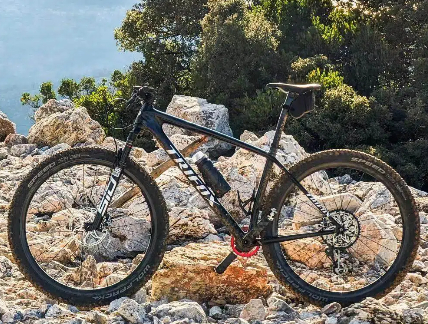
Discover the Trifox SDY20 carbon MTB frame. This lightweight 29er hardtail frame combines a stiff, efficient carbon layup with the modern SRAM Universal Derailleur Hanger (UDH) for unparalleled performance and compatibility. Perfect for XC and trail riders. The Quest for the Perfect Hardtail In the world of mountain biking, the hardtail holds a special place. It’s a pure, direct connection between rider and trail, rewarding skill and fitness with unmatched efficiency. But not all hardtails are created equal. The modern rider demands a frame that is not only stiff and lightweight but also future-proof, ready to accept the latest components without compromise. Enter the Trifox SDY20 Carbon MTB Hardtail Frame. This frame is engineered from the ground up to meet these exact demands. By fusing a high-performance carbon fiber 29er design with the game-changing SRAM Universal Derailleur Hanger (UDH), the SDY20 isn't just another frame—it's a smart, long-term investment for discerning riders. A Deep Dive into the SDY20's Carbon ChassisAt the heart of any great frame is its material and construction. The SDY20 is meticulously crafted from unidirectional carbon fiber, a process that places each strand of carbon in a specific direction to optimize strength and stiffness where it's needed most. Unmatched Stiffness: The primary benefit of this advanced carbon layup is phenomenal power transfer. When you put power into the pedals, the SDY20 translates it directly into forward motion with minimal flex. This results in explosive acceleration and climbing efficiency that will make you feel stronger on every ride. Feather-Light Weight: Carbon fiber's incredible strength-to-weight ratio means the SDY20 frame is remarkably light. Shedding weight from the frame, the largest single component of your bike, has a dramatic effect on overall ride feel, making the bike more agile and easier to handle, especially on technical climbs.. 29er Performance: The frame is designed exclusively for 29-inch wheels, the current gold standard for mountain biking. Larger wheels roll over obstacles with greater ease, maintain momentum better, and provide increased traction and confidence through rough sections. The SDY20’s geometry is optimized to harness all the benefits of the 29er platform. The Game-Changing Upgrade: Why the UDH MattersThis is where the Trifox SDY20 truly separates itself from the pack. The inclusion of the SRAM Universal Derailleur Hanger (UDH) is more than a minor spec update; it's a fundamental shift in compatibility and durability. Universal Compatibility: As the name suggests, the UDH is an industry-standard hanger. It’s designed to work with an enormous range of derailleurs, most notably SRAM's current and future Eagle Transmission (AXS) groupsets. This means your SDY20 frame is ready for the latest wireless shifting technology right out of the box. No more searching for proprietary, model-specific hangers. Enhanced Durability & Protection: The UDH is designed to be a sacrificial component. In the event of an impact to your rear derailleur, the UDH is engineered to break before the much more expensive derailleur or frame does. This simple, smart design can save you hundreds of dollars in repairs and is a critical feature for any mountain bike that sees real trail use. Future-Proofing Your Investment: By building your bike around a frame with a UDH, you are ensuring that it will be compatible with the vast majority of drivetrain upgrades for years to come. The UDH is quickly becoming the new norm, and the SDY20 puts you on the right side of that evolution.: Built for Modern Standards: More Than Just UDHThe forward-thinking design of the SDY20 extends beyond the derailleur hanger. This frame is built to accommodate the best modern components. Boost Spacing (148x12mm Thru-Axle): Boost hub spacing increases wheel stiffness and strength, providing better alignment for wider tires and improving handling precision. Modern Geometry: The frame features a contemporary geometry that strikes a perfect balance for XC and trail riding. It provides a confident, stable stance on descents while remaining agile and responsive for climbing and technical maneuvers. Who Is The Trifox SDY20 Carbon Frame For? This frame is the ideal foundation for: The Weight-Conscious Racer: Looking for every possible advantage in stiffness and weight savings. The Trail Enthusiast: Wants a lively, efficient, and modern hardtail that can tackle a variety of terrain with confidence. The Tech-Savvy Builder: Planning a custom build and wants a frame that is compatible with the latest and greatest components, including wireless groupsets. The Upgrader: Seeking to move from an older aluminum frame to a high-performance carbon platform without sacrificing future compatibility. A Frame Ready for Tomorrow's TrailsThe Trifox SDY20 Carbon MTB Hardtail Frame is a masterclass in modern bicycle design. It doesn't force you to choose between a stiff, lightweight carbon chassis and future-proof compatibility. It delivers both in one elegant package. By combining the race-winning performance of its 29er carbon frame with the industry-standard SRAM UDH upgrade, the SDY20 offers a compelling value proposition. It’s a frame that feels incredible to ride today and is smartly equipped for the innovations of tomorrow. Ready to build your dream hardtail? Explore the Trifox SDY20 Carbon Frame and discover the perfect balance of weight, stiffness, and modern technology.
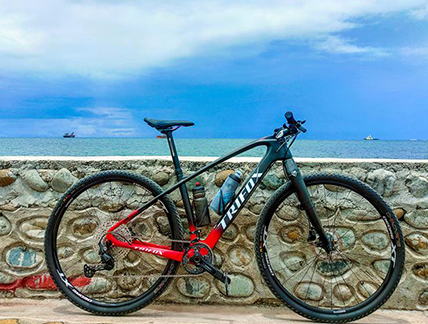
Mountain biking enthusiasts know the thrill of hitting the trails with a bike that combines performance, durability, and style. However, finding a high-quality carbon mountain bike at an affordable price—and without long shipping delays—can feel like an impossible dream. Enter the Trifox M2 29er Carbon Hardtail MTB, a game-changing bike that delivers professional-grade features for under $1,000 and ships directly from the USA. No more waiting months for international deliveries or breaking the bank to get your hands on a premium ride. Why the Trifox M2 Stands Out The Trifox M2 is designed for riders who demand excellence without compromise. Its lightweight carbon fiber frame offers superior strength and agility, making it ideal for tackling rugged trails and challenging terrains. As a 29er hardtail mountain bike, it provides excellent roll-over capabilities and stability, ensuring a smooth and controlled ride. Whether you’re a beginner or a seasoned rider, the M2’s balanced geometry and responsive handling will elevate your biking experience. Key Features and Performance 1. Carbon Fiber Frame: The heart of the M2 is its full carbon frame, which reduces weight while maximizing durability and shock absorption. This means you can push your limits without worrying about frame fatigue or damage. 2. 29-Inch Wheels: These larger wheels offer better traction and efficiency, especially on technical trails. They help you maintain momentum and navigate obstacles with ease. 3. Professional Components: Despite its budget-friendly price, the M2 doesn’t cut corners on components. It includes a reliable Shimano drivetrain, hydraulic disc brakes for precise stopping power, and a smooth suspension fork. 4. Versatility: The bike is suited for a variety of disciplines, including cross-country, trail riding, and even light racing. Its adaptable design lets you customize it as your skills progress. Its direct-to-consumer model eliminates middlemen costs, making high-end features accessible at an unbeatable price. Plus, with warehouses in the USA, shipping is fast and reliable—no more impatient waits for overseas shipments. Ideal for Trail Enthusiasts and Value Seekers The Trifox M2 is perfect for riders who want to invest in a quality bike without the premium price tag. It’s also an excellent choice for those upgrading from entry-level models or looking for a secondary bike for frequent use. With its sleek design and robust performance, it’s built to impress on and off the trails. Conclusion: Your Dream Bike Awaits The Trifox M2 29er Carbon Hardtail MTB proves that you don’t have to sacrifice quality for affordability—or wait months for delivery. For under $1,000, you get a carbon-framed, component-packed mountain bike that ships quickly from the USA. Ready to build your dream bike without the wait? Explore the Trifox M2 today and hit the trails with confidence! Shop the Trifox M2 now and transform your riding experience.
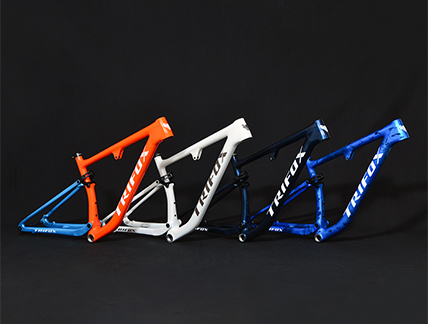
Embarking on the journey to build your dream cross-country (XC) mountain bike is an exciting endeavor. At the heart of this project lies the most critical decision: selecting the perfect frame. A 29er XC full suspension carbon frame represents the ultimate fusion of speed, efficiency, and control, designed to conquer demanding trails while remaining lightweight and responsive. But with a myriad of options available, how do you ensure you're making the right choice? This comprehensive guide will walk you through the essential factors to consider, using the exemplary TRIFOX Trail II Pro Full Suspension Carbon MTB Frame as a benchmark for what a top-tier frame should offer. 1. Geometry: The Blueprint of Performance The geometry of a frame is the DNA of your bike's handling characteristics. For modern XC and downcountry riding, the goal is a blend of aggressive climbing efficiency and confident descending stability. Head Tube Angle (HTA): A slacker HTA boosts stability on technical descents. The TRIFOX Trail II Pro features a 67.5-degree head angle, which is progressive for an XC frame, providing increased confidence when the trail turns downward. Seat Tube Angle (STA): A steeper STA positions the rider optimally over the bottom bracket, enhancing climbing efficiency and power transfer. The Trail II Pro's 75.5-degree seat angle ensures you can tackle steep climbs effectively. Reach and Stack: These measurements define your cockpit space and riding posture. Modern geometries tend toward longer reach and lower stack for improved stability and a more aerodynamic riding position. Why it matters: The right geometry ensures the bike feels intuitive and responsive. The Trail II Pro's geometry strikes a perfect balance, making it adept at both winning races and tackling technical trail features. 2. Suspension Design: The Heart of the Ride A full-suspension XC bike must offer traction and comfort without compromising pedaling efficiency. The design of the suspension linkage is paramount. Linkage Type: The TRIFOX Trail II Pro employs a highly efficient four-bar suspension system. This design is renowned for its ability to minimize pedal bob, ensuring that your energy is directed into forward momentum rather than being absorbed by the suspension. Travel: For XC purposes, 35-45mm of rear travel is the gold standard. It provides sufficient absorption for rough terrain and maintains grip without sacrificing the snappy, efficient feel essential for climbing and acceleration. The Trail II Pro is designed around this ideal 35-45mm of travel. Anti-Squat and Kinematics: Advanced suspension kinematics with high anti-squat values keep the frame taut under power, translating to efficient pedaling—a non-negotiable trait for any serious XC frame. 3. Carbon Fiber Quality: Where Engineering Meets Art The grade and construction of the carbon fiber directly influence weight, stiffness, compliance, and overall durability. Carbon Grade: Look for frames utilizing high-modulus carbon fibers. The TRIFOX Trail II Pro is crafted from T800 carbon fiber, a premium material that allows for an exceptional strength-to-weight ratio. This results in a frame that is both incredibly light and impressively robust. Layup Process: The artistry of carbon frame building lies in the layup. Precision hand-laying allows engineers to tailor the flexibility and stiffness in specific areas. The down tube and bottom bracket can be reinforced for stiffness and power transfer, while the seat stays can be designed to offer vertical compliance, smoothing out trail vibrations. Why it matters: A high-quality carbon frame like the Trail II Pro delivers a ride quality that is stiff and responsive when you stamp on the pedals yet surprisingly comfortable over long, rugged distances. 4. Modern Features and Compatibility: Future-Proofing Your Investment A modern frame must adhere to current component standards to ensure compatibility and ease of upgrades. Dropper Post Compatibility: The ability to run a dropper post is essential for modern trail riding. The Trail II Pro features internal routing for a 30.9mm dropper post, allowing for a clean setup and confident descending. Boost Spacing: The frame boasts 148x12mm Boost rear spacing and 110x15mm front spacing. This standard increases wheel stiffness, improves tire clearance, and enhances overall handling precision. Threaded Bottom Bracket: A BSA threaded bottom bracket is a signature feature of a well-thought-out frame. It is renowned for its reliability, ease of maintenance, and resistance to creaking—a common issue with press-fit systems. Internal Cable Routing: Full internal routing for derailleur and dropper posts not only creates a sleek, aesthetic look but also protects the cables from dirt and damage. 5. Weight and Value Proposition The pursuit of lightness is central to XC. The TRIFOX Trail II Pro frame weighs approximately 1272g-1336g, placing it firmly in the competitive range for high-performance carbon frames. When evaluating price, consider the value offered by direct-to-consumer brands like TRIFOX, which provide cutting-edge technology and materials at a fraction of the cost of many major brands. Conclusion: The TRIFOX Trail II Pro – A Paradigm of Intelligent DesignSelecting the perfect frame is a process of matching your riding ambitions with engineering excellence. By focusing on geometry, suspension design, carbon quality, and modern features, you can make an informed decision that will define your ride for years to come. The TRIFOX Trail II Pro 29er XC Full Suspension Carbon Frame emerges as a standout option that exemplifies these principles: Its modern geometry inspires confidence across diverse terrain. The efficient four-bar suspension delivers traction without compromise. The T800 carbon construction offers a sublime blend of lightness and strength. Its future-proof features ensure compatibility with the best components on the market. By using this guide and the Trail II Pro as a reference, you are equipped to choose a frame that will form the foundation of an exceptional mountain bike, ready to push the limits of speed and performance.
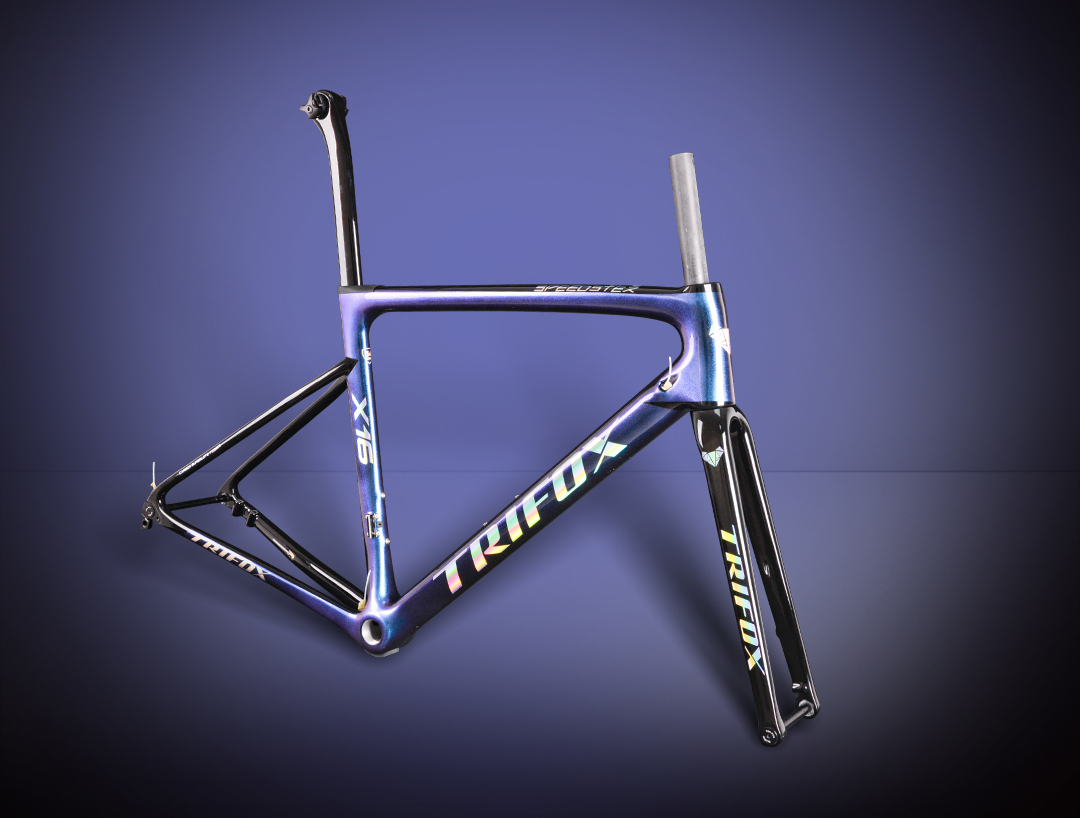
What makes a road bike frame truly popular? It's not just hype – it's the perfect blend of performance, value, and real-world usability. Trifox's X16 Disc Brake Carbon Frame consistently tops their charts, and for good reason. Let's dive into what makes this frame a standout choice for discerning riders: Uncompromising Lightweight Performance: Crafted from high-modulus T800 carbon fiber, the X16 boasts an impressive frame weight hovering around 900g (size dependent). This translates directly to snappier acceleration, effortless climbing, and a lively, responsive ride that feels eager under power. It's pure road buzz without the penalty. Disc Brake Dominance: Embracing the modern standard, the X16 features flat-mount disc brake compatibility. This means superior stopping power in all conditions – wet descents, tight corners, or emergency stops – offering consistent modulation and control that rim brakes simply can't match. Confidence is key to speed. Stiffness Meets Comfort: Trifox engineers didn't just chase grams. The X16 features a stiff front triangle (head tube, down tube, bottom bracket) for razor-sharp handling and efficient power transfer when you stomp on the pedals. Yet, the carefully shaped thin seatstays and fork provide crucial vertical compliance, absorbing road buzz and reducing fatigue on longer rides. You get race-ready feedback without the harshness. Modern, Versatile Geometry: The X16 strikes a brilliant balance. Its geometry leans towards aggressive (think shorter headtubes, longer reaches) for efficient power output and aerodynamic potential, yet remains accessible enough for spirited club rides and gran fondos. It’s a frame built for speed that doesn’t demand a pro-level contortion. Smart, Rider-Focused Design: Threaded Bottom Bracket (BB86): A massive win for reliability and home mechanics. No press-fit creaks here! Easy installation and long-term peace of mind. Full Internal Cable Routing: Creates a sleek, aerodynamic profile while protecting cables and hoses from the elements. Looks pro, functions flawlessly. Wide Compatibility: Accommodates electronic and mechanical groupsets, 28c+ tires (great for comfort/rough roads), and standard 27.2mm seatposts for tuning ride feel. Why the X16 Resonates: It delivers pro-level pedigree (lightweight carbon, advanced shaping, disc performance) at a direct-to-consumer price that makes high-performance cycling genuinely accessible. You're not paying for flashy marketing or dealer markups – just exceptional engineering focused on the ride. The Trifox X16 isn't just popular; it's popular for a reason. It masterfully combines the essential ingredients modern road riders crave: lightweight carbon efficiency, the confidence of disc brakes, a balanced blend of stiffness and comfort, and practical, reliable design – all wrapped up in a package offering outstanding value. If you're seeking a frame that punches far above its weight class and forms the foundation of a truly exciting road machine, the X16 is Trifox's testament to smart performance.

















